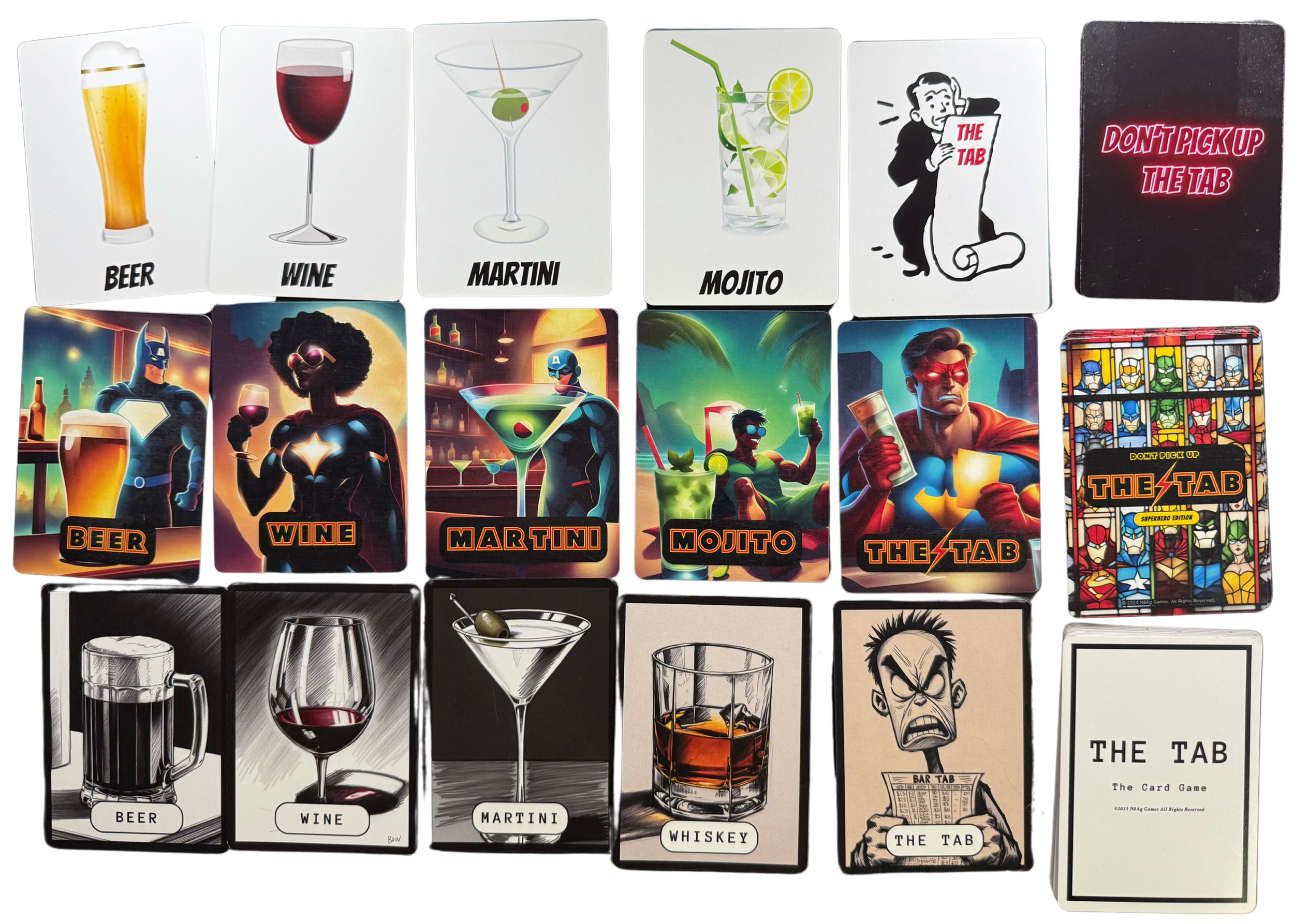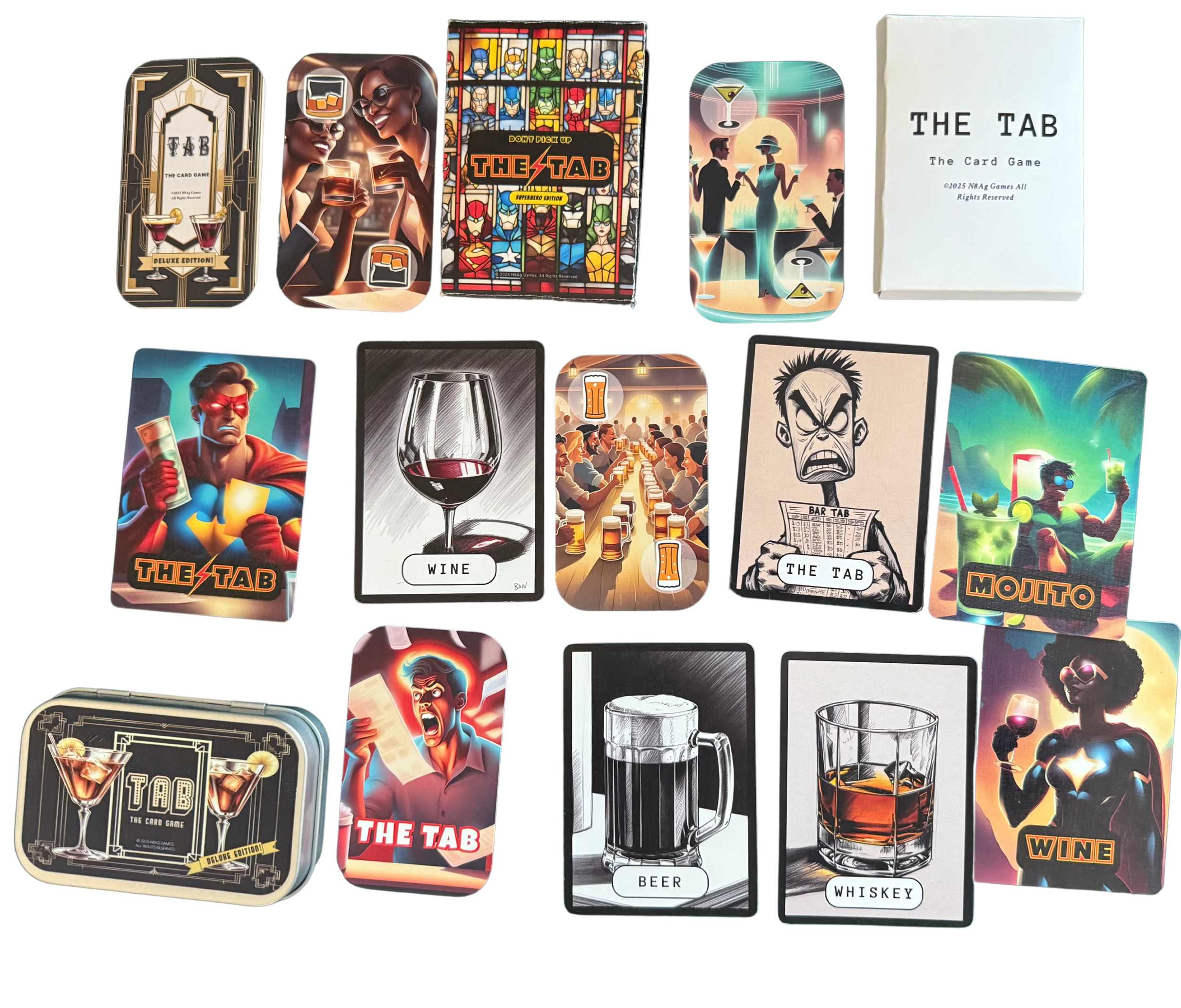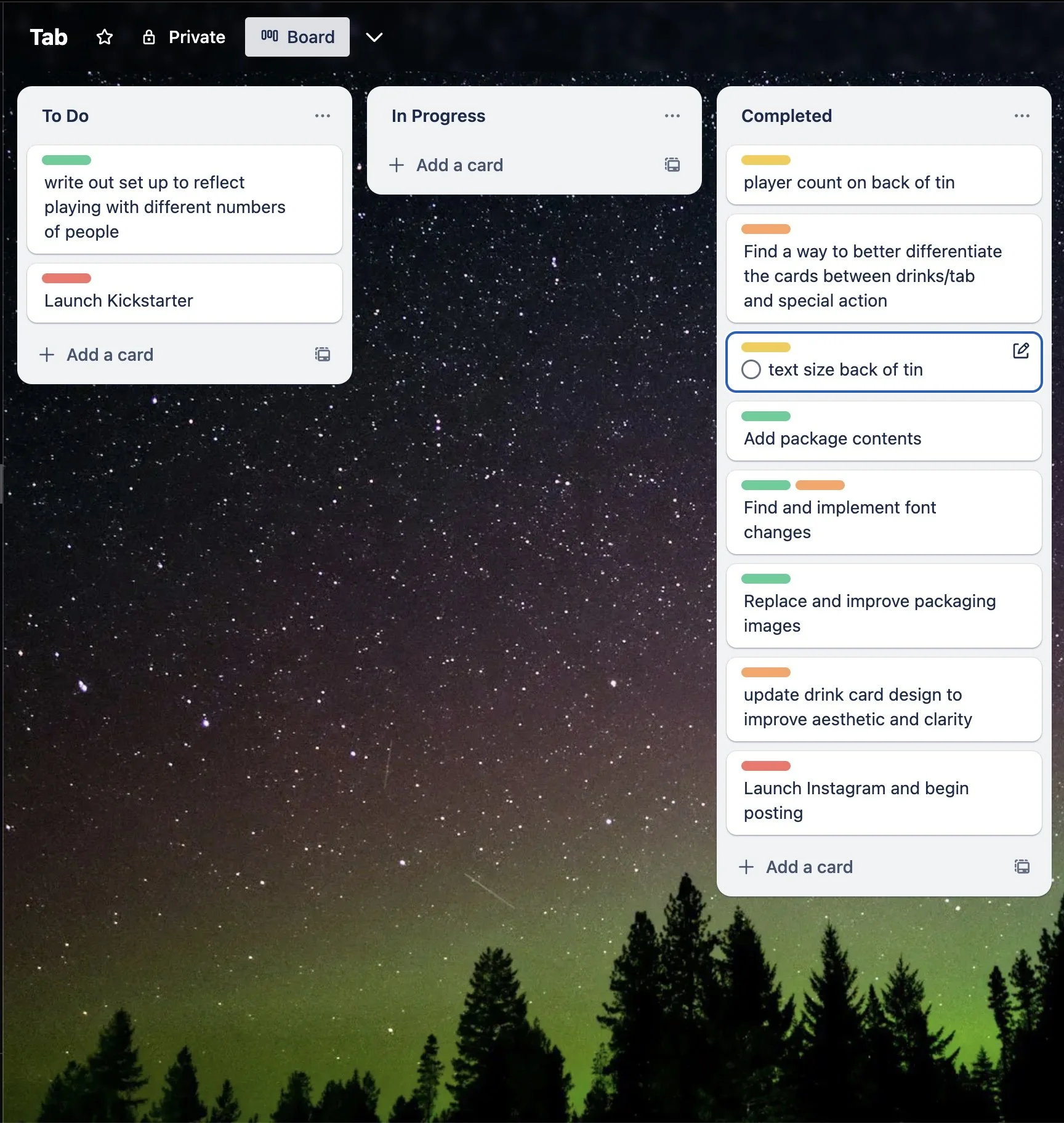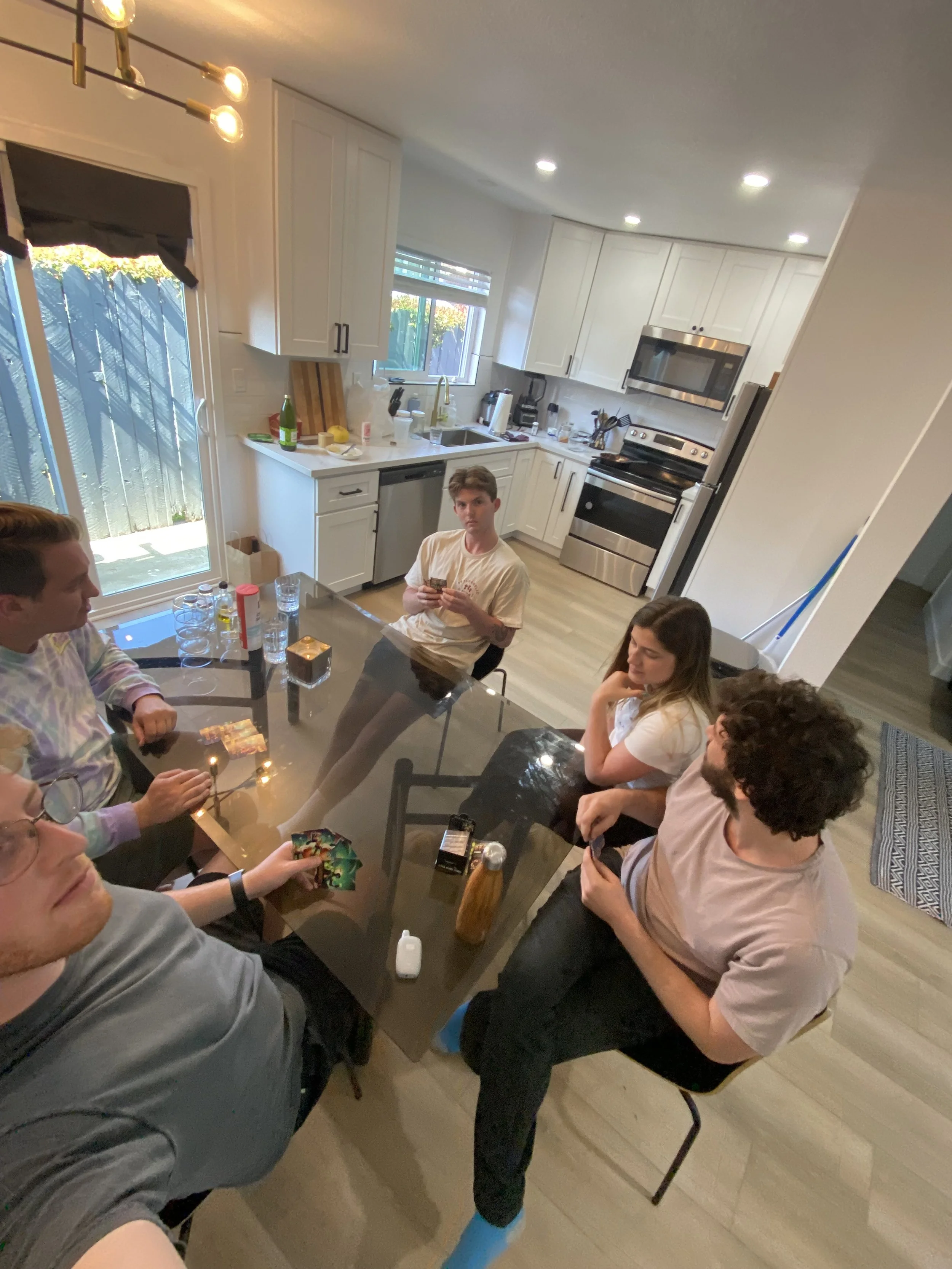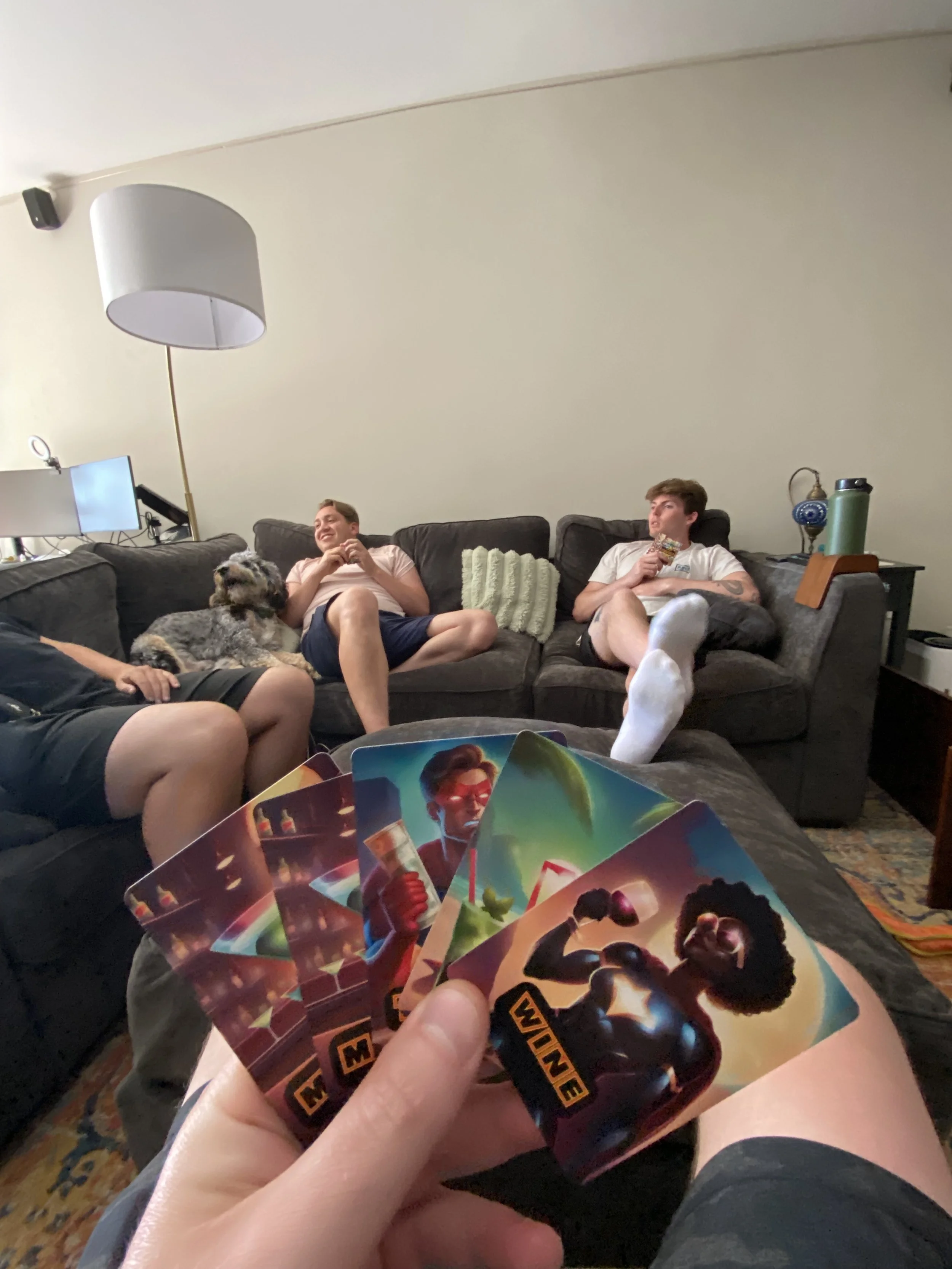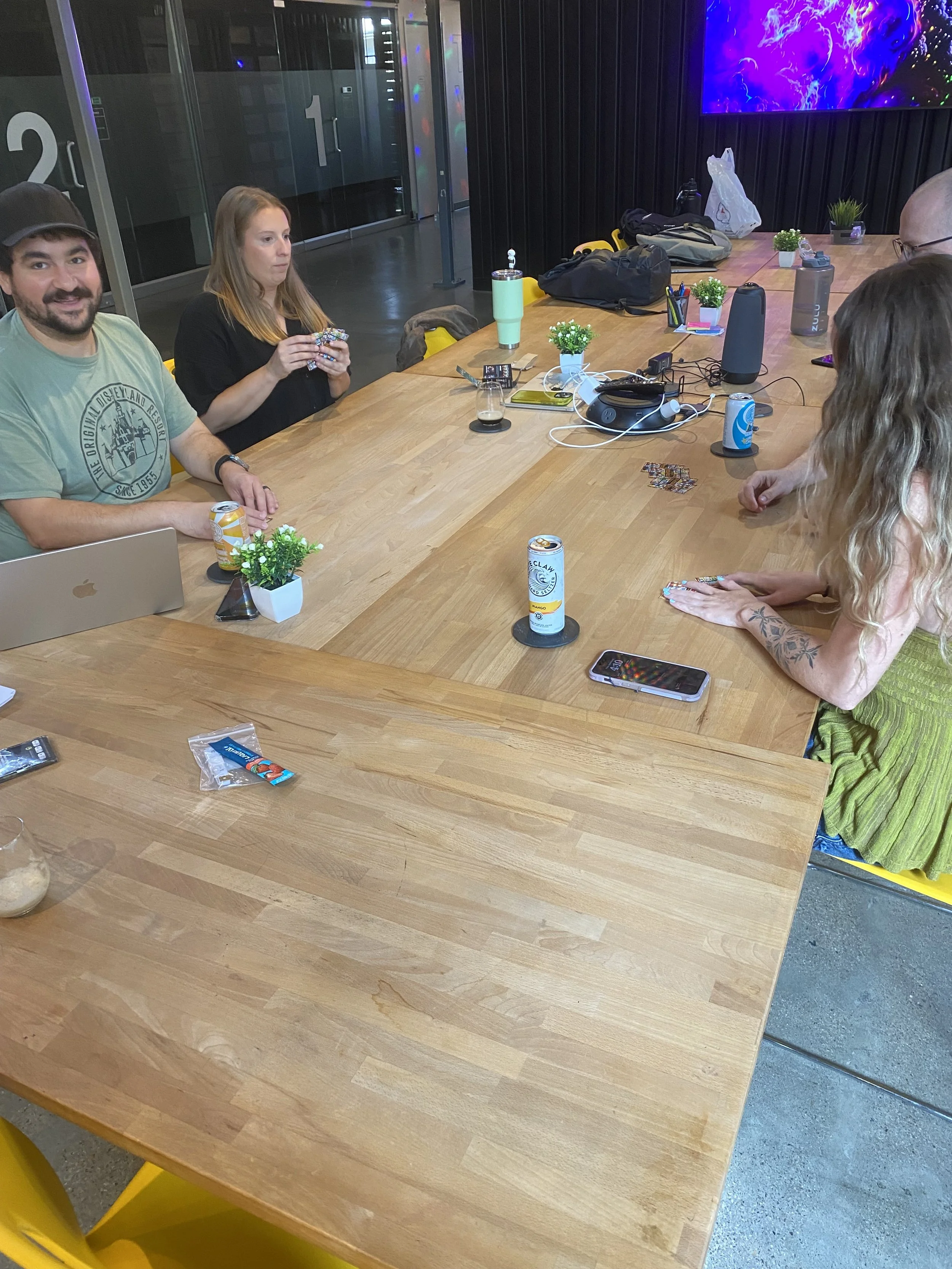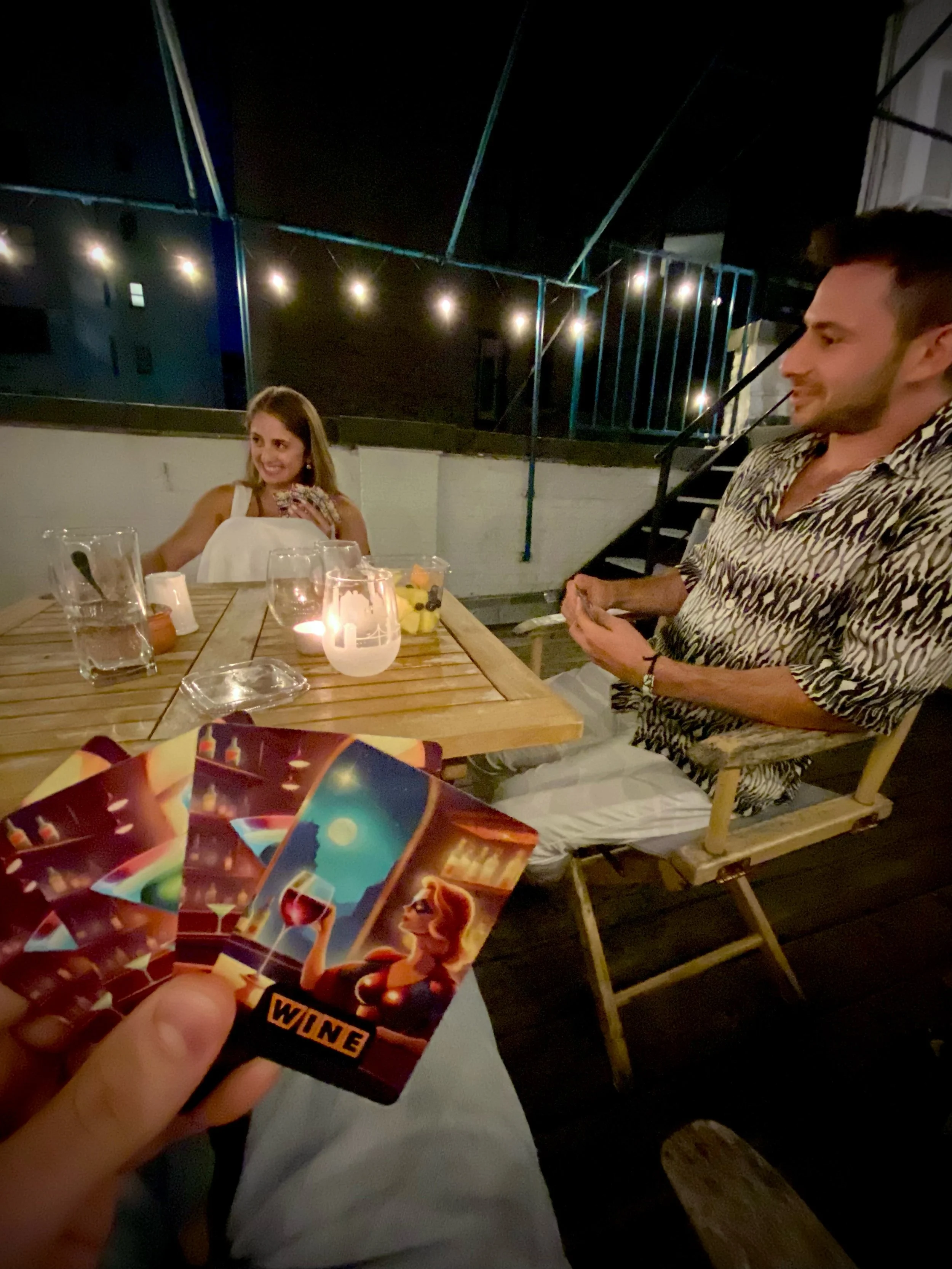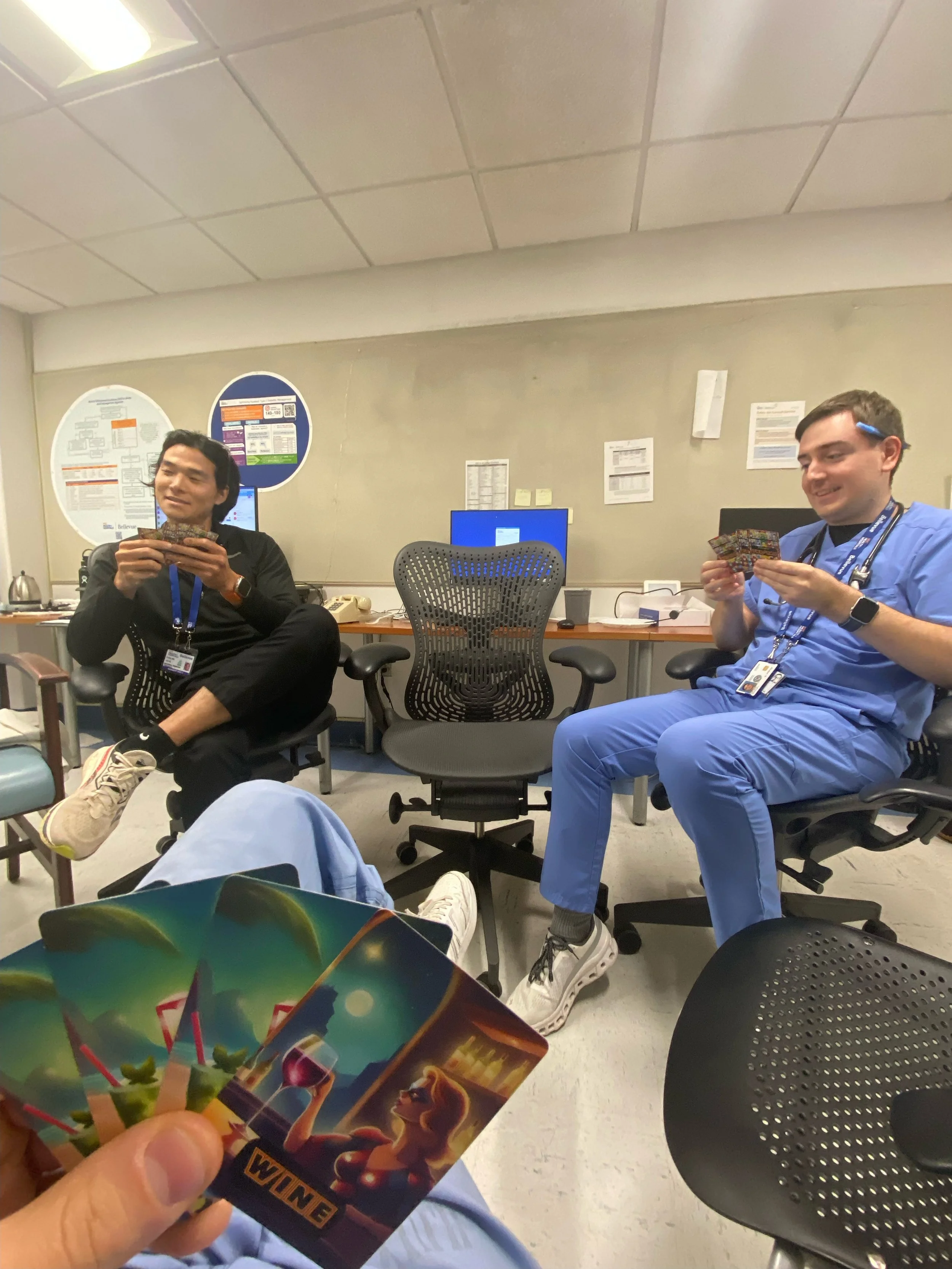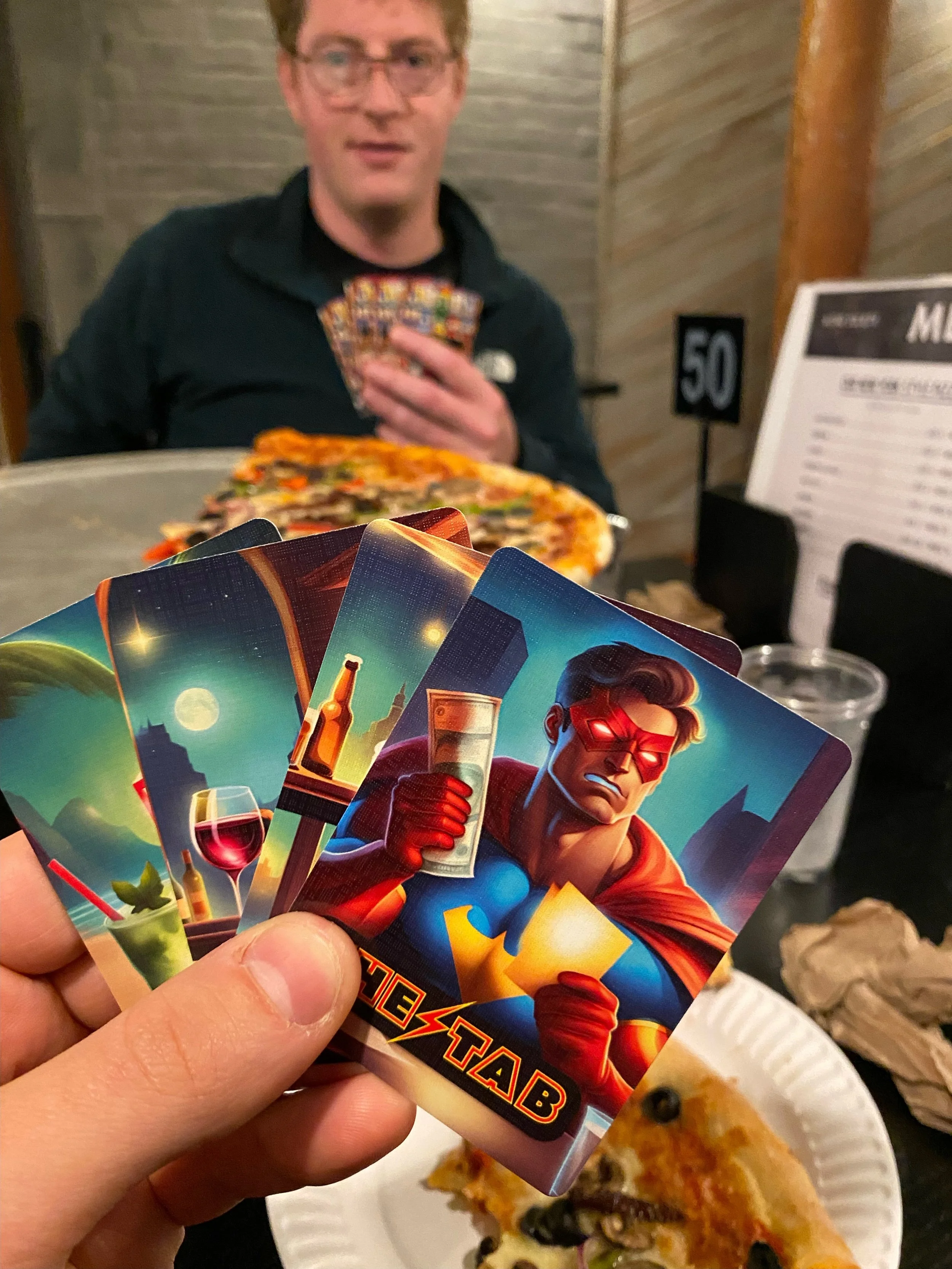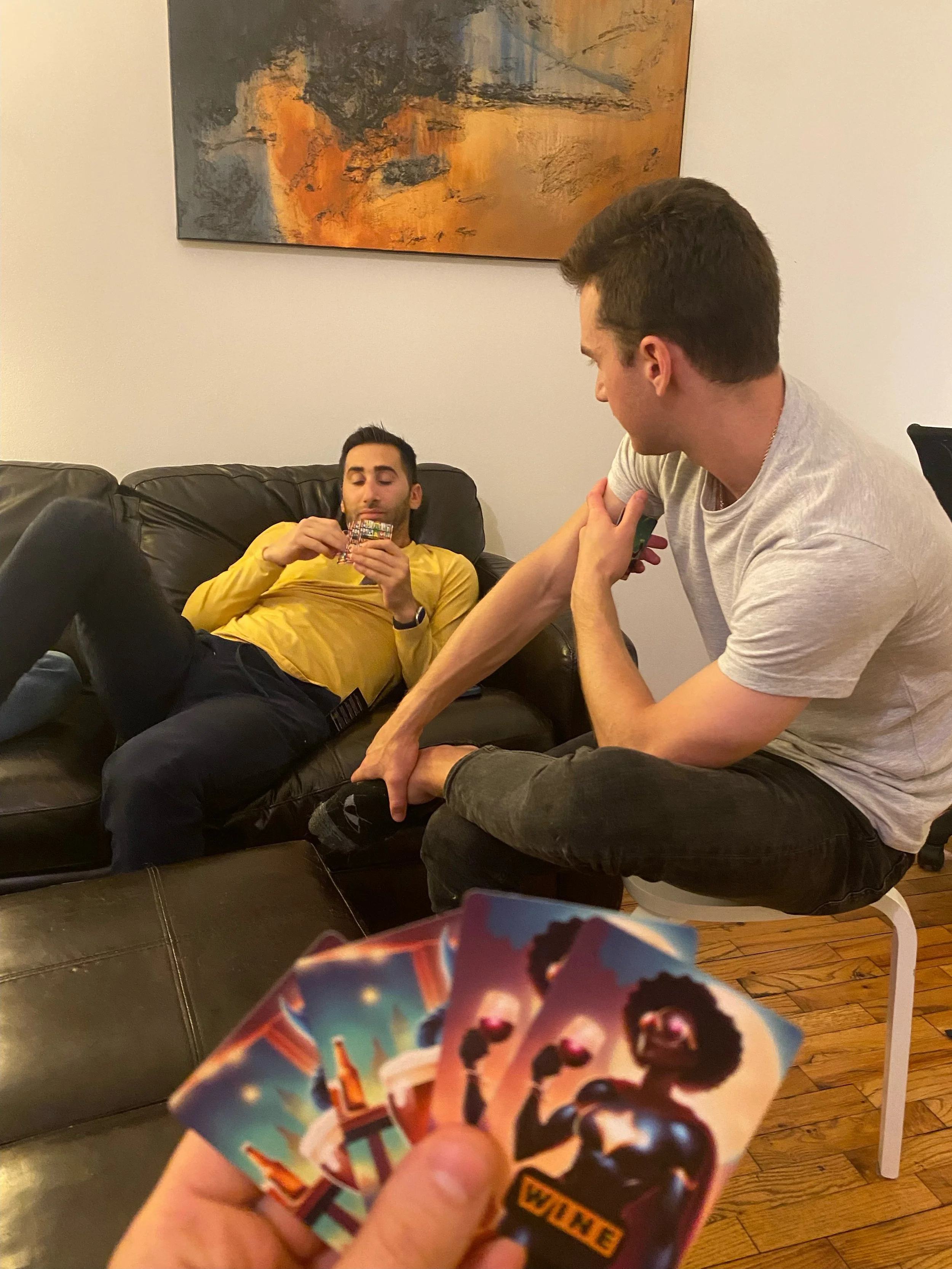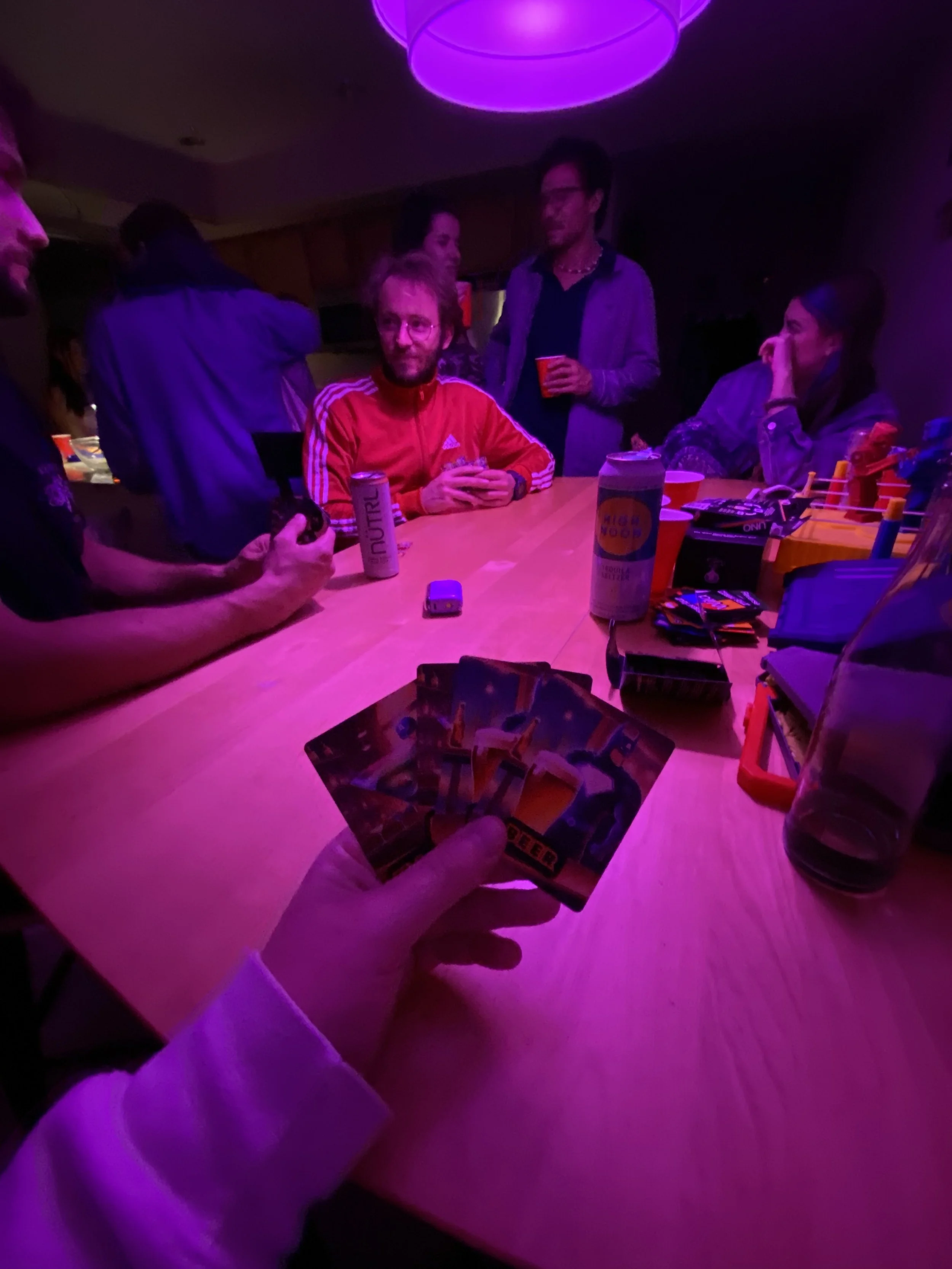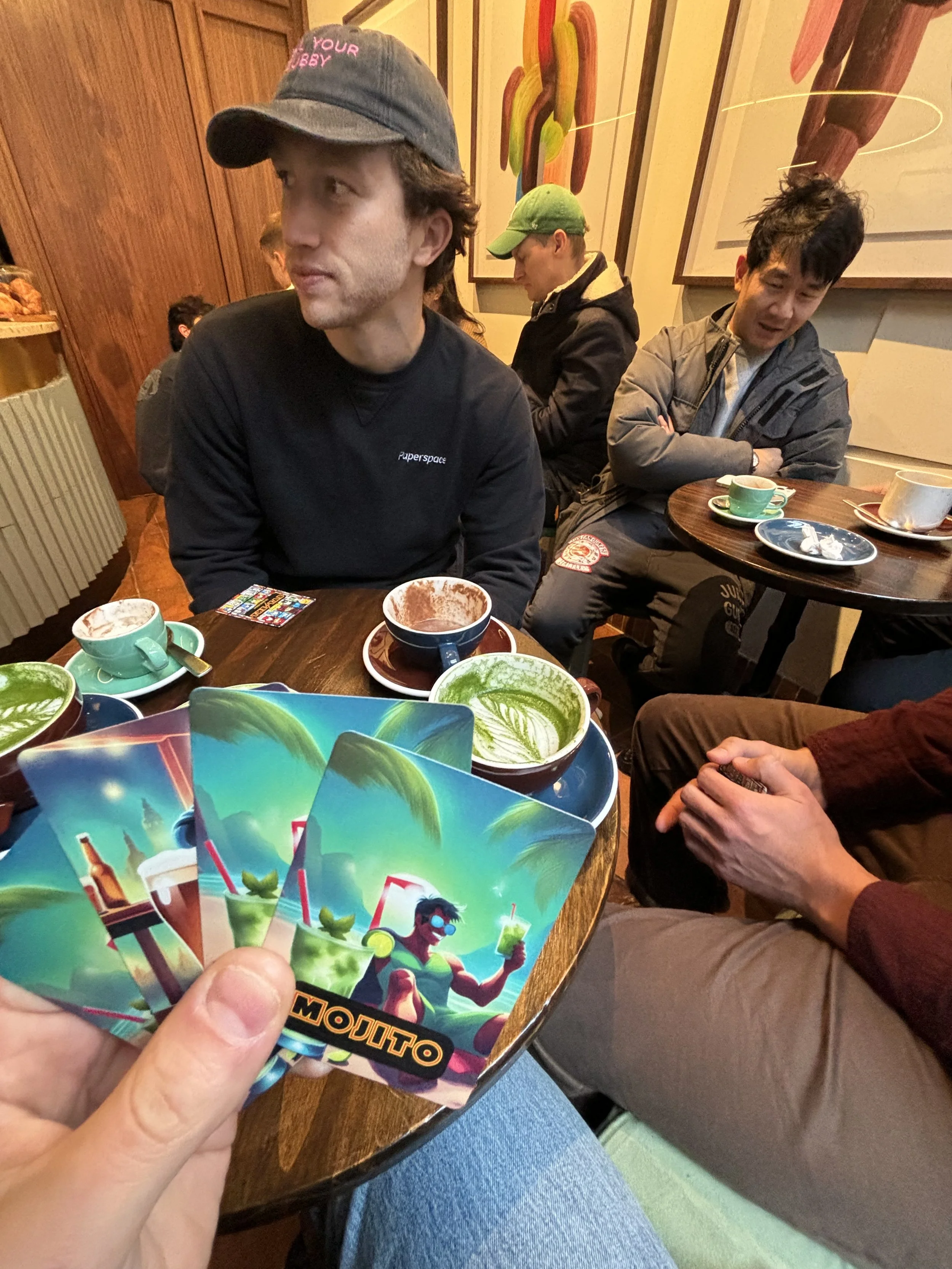The Tab - The Card Game
The Origin Story
The Tab started the way all great ideas do—over a few unforgettable nights out with friends. We were the kind of group that would grab a table, break out a deck of cards, and get lost in the game while the rest of the bar carried on around us. Somewhere in the mix of competition, strategy, and friendly deception, a new game started to take shape.
It all began with a weekend challenge from my friend Ethan, which led me to create the first version of The Tab. As a UX Researcher who loves design and creativity, I saw this as an opportunity to not just build a game but also apply my skills in user research, design iteration, and project management in a way that was both fun and challenging.
Evolution of the Game
The first iteration of The Tab was built as a minimum viable product (MVP) using simple, royalty-free images. This allowed me to test core mechanics and gather early feedback. It quickly became clear that several improvements were needed to enhance durability, usability, and presentation.
One of the first upgrades was adding a UV-protective coating to increase the longevity of the cards. At the same time, I began working on packaging. Initially, the game only included a single “Rules” card and had no dedicated packaging. To improve portability and organization, I opted for a hook box design with the rules printed inside—eliminating the risk of losing them. Additionally, I shortened the game’s name from Don’t Pick Up The Tab to simply The Tab for a cleaner, more memorable identity.
The superhero edition marked a major leap forward, introducing premium printing features, a linen texture, and AI-generated artwork that gave the game a fun, themed aesthetic. These upgrades significantly improved the tactile feel and durability of the cards. Based on early feedback, I also added “The Card Game” to the front of the box to clarify the nature of the product for new players.
The most current iteration of The Tab embraces a minimalist design, prioritizing clean visuals and intuitive gameplay. Insights from playtesting sessions have driven refinements such as vertically mirrored descriptive text for better readability and subtle color adjustments to enhance the aesthetic. The game continues to evolve based on player feedback, ensuring an engaging and accessible experience for all.
Design Process
Creating The Tab: The Card Game required an iterative design approach, balancing visual appeal with functional clarity. I used Canva’s generative AI tool, Dream Lab, to create vibrant, superhero-themed card designs. While some players appreciated the bold aesthetic, others found the visuals distracting, impacting readability and gameplay flow.
To enhance usability, I pivoted to a cleaner, minimalist design that prioritized quick card recognition. I also introduced vertically mirrored titles on each card, ensuring legibility from any orientation and improving the overall play experience. This process underscored the importance of balancing user preferences, accessibility, and visual hierarchy in game design.
Organization & Project Management
Developing The Tab from an idea to a fully realized game has required careful planning, iteration, and organization. As my central project management tool, I've used Trello to keep track of every aspect of development.
With Trello, I’ve broken down the game’s development into three key stages:
To Do: Tasks that need to be completed, such as refining the game’s setup for different player counts and preparing for the Kickstarter launch.
In Progress: Active tasks that require ongoing work and refinement.
Completed: Finished tasks, such as improving packaging design, adjusting the text size on the tin, and updating card designs for clarity.
Trello has helped me track everything from game mechanics and visual design updates to marketing efforts like launching the game’s Instagram presence. By using labels and organized lists, I can prioritize tasks, stay on schedule, and ensure every detail—big or small—is addressed.
This system has been especially valuable for refining The Tab based on playtesting feedback, ensuring that the game remains fun, intuitive, and engaging. As the project moves toward Kickstarter and final production, Trello continues to be an essential tool for keeping development on track.
Playtesting & Refinement
User feedback has played a huge role in shaping The Tab. Early players loved the card designs but found them a bit too busy, so I simplified them for a cleaner, more intuitive look. The mechanics proved to be one of the game’s biggest strengths—most players picked it up within a round or two since the game is more about reading people than just playing the cards.
Since The Tab is inspired by the energy of a night out, I designed it to be just as fun whether you’re drinking or not. But for those who are, the bold visuals and simple mechanics ensure that no matter how blurry things get, you’ll still be able to play.
Check out some fun shots from previous playtesting ↓
My Personal Connection
I’ve been a fan of board and card games for as long as I can remember. There’s something special about how they bring people together, creating shared moments of competition, laughter, and surprise. Getting the chance to design a game that captures that same feeling—and knowing it can be played just about anywhere—is something I’m incredibly proud of.
Growing the Community
Beyond just creating the game, I wanted to build a community around it. The Tab is now officially registered on BoardGameGeek, where players can find information, share experiences, and discuss strategies.
I’ve also been active on Instagram, posting game updates, playtesting highlights, and behind-the-scenes looks at the development process.
Engaging with the community has been a rewarding part of this journey, and I love seeing how different people experience the game.
The Road Ahead
The Tab is now live on Kickstarter as one way to jumpstart the journey towards refined production, high-quality materials, an optimized supply chain, and sustainable packaging—all while keeping costs reasonable for players.
Looking ahead, I’m focused on launching the Deluxe Edition, establishing an LLC, and fine-tuning manufacturing and distribution. This is just the beginning of what The Tab can become.


